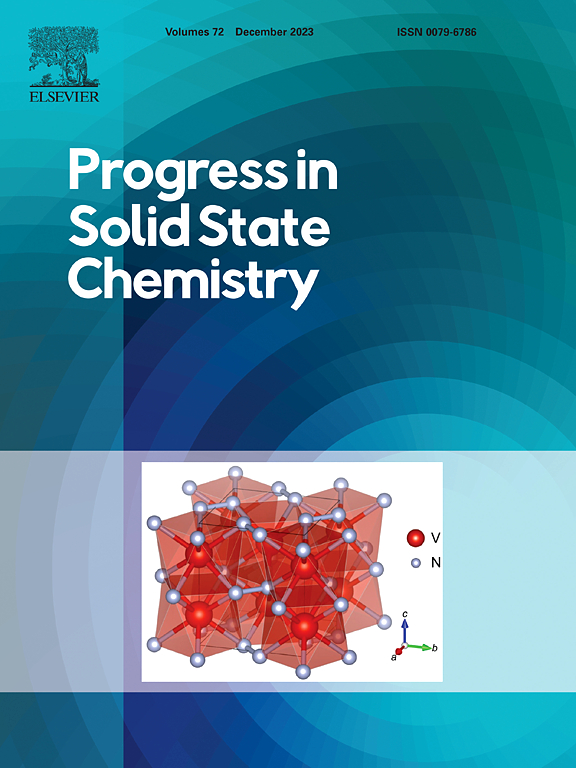Elucidating interfacial behaviors of Li-ion argyrodites through μ-cavity electrode analysis
IF 9.1
2区 化学
Q1 CHEMISTRY, INORGANIC & NUCLEAR
引用次数: 0
Abstract
In the current scenario, All-Solid-State Batteries (ASSBs) are one of the inevitable energy storage systems due to their high energy density and safety aspects. Nonetheless, they have some limitations in their implementation for high performance solid-state lithium batteries. Notably, the reactions at the electrode and electrolyte interface, which negatively affects the Li-ion transport. From this perspective, we prepared the renowned high ionic conductive solid electrolytes (Li6PS5Cl, Li6.2P0.8Si0.2S5Cl0.5Br0.5, Li5.3PS4.3Cl1.7 and Li5.3PS4.3ClBr0.7) using a ball milling process subsequent to calcination at appropriate temperatures. The prepared electrolytes exhibited ionic conductivity values of 4.5, 5.3, 9.0 and 15.9 mS cm−1, respectively. Importantly, the electrode and electrolyte interface processes are examined through microcavity electrode system using our prepared electrolyte and LiNi0.5Co0.2Mn0.3O2 (NCM523) cathode. In this case, a single particle confined in a micro cavity electrode system, NCM523-Li6.2P0.8Si0.2S5Cl0.5Br0.5 exhibits the highest initial discharge capacity value of 5.27 nAh, and an even higher initial Coulombic efficiency of 87.9 % surpassing other micro electrode systems. This and the electrochemical kinetic parameters evaluated through the Tafel plot analysis confirm that Si substitution minimizes chemical side reactions at the interface. The electrochemical kinetic parameters reveal that Li6.2P0.8Si0.2S5Cl0.5Br0.5 electrolyte has high exchange current, low charge transfer resistance and high lithium diffusion coefficient values. This proves that a favorable interface was formed between the NCM523 and the SE, thereby resulting in high rate of lithium-ion exchange between the NCM523 and the SE. The comparative study confirms the electrochemical kinetics improved by the bromine and silicon incorporation in the Li-argyrodite structure and offers flexible Li-ion pathways for better electrochemical performances.

用μ腔电极分析阐明锂离子银柱石的界面行为
在当前情况下,全固态电池(assb)因其高能量密度和安全性而成为不可避免的储能系统之一。尽管如此,它们在实现高性能固态锂电池方面仍有一些局限性。值得注意的是,电极和电解质界面的反应对锂离子的输运产生了负面影响。从这个角度来看,我们在适当的温度下煅烧后采用球磨工艺制备了著名的高离子导电性固体电解质(Li6PS5Cl, Li6.2P0.8Si0.2S5Cl0.5Br0.5, Li5.3PS4.3Cl1.7和Li5.3PS4.3ClBr0.7)。制备的电解质离子电导率分别为4.5、5.3、9.0和15.9 mS cm−1。重要的是,利用制备的电解质和LiNi0.5Co0.2Mn0.3O2 (NCM523)阴极,通过微腔电极系统研究了电极和电解质的界面过程。在这种情况下,单个粒子被限制在微腔电极体系中,NCM523-Li6.2P0.8Si0.2S5Cl0.5Br0.5显示出最高的初始放电容量值5.27 nAh,并且比其他微电极体系具有更高的初始库仑效率(87.9%)。这与通过Tafel图分析评估的电化学动力学参数证实,Si取代最小化了界面上的化学副反应。电化学动力学参数表明,Li6.2P0.8Si0.2S5Cl0.5Br0.5电解质具有大的交换电流、低的电荷转移电阻和高的锂扩散系数值。这证明NCM523与SE之间形成了良好的界面,从而导致NCM523与SE之间的锂离子交换率高。通过对比研究,证实了溴和硅的掺入改善了锂银石结构的电化学动力学,并提供了柔性的锂离子通路以获得更好的电化学性能。
本文章由计算机程序翻译,如有差异,请以英文原文为准。
求助全文
约1分钟内获得全文
求助全文
来源期刊

Progress in Solid State Chemistry
化学-无机化学与核化学
CiteScore
14.10
自引率
3.30%
发文量
12
期刊介绍:
Progress in Solid State Chemistry offers critical reviews and specialized articles written by leading experts in the field, providing a comprehensive view of solid-state chemistry. It addresses the challenge of dispersed literature by offering up-to-date assessments of research progress and recent developments. Emphasis is placed on the relationship between physical properties and structural chemistry, particularly imperfections like vacancies and dislocations. The reviews published in Progress in Solid State Chemistry emphasize critical evaluation of the field, along with indications of current problems and future directions. Papers are not intended to be bibliographic in nature but rather to inform a broad range of readers in an inherently multidisciplinary field by providing expert treatises oriented both towards specialists in different areas of the solid state and towards nonspecialists. The authorship is international, and the subject matter will be of interest to chemists, materials scientists, physicists, metallurgists, crystallographers, ceramists, and engineers interested in the solid state.
 求助内容:
求助内容: 应助结果提醒方式:
应助结果提醒方式:


